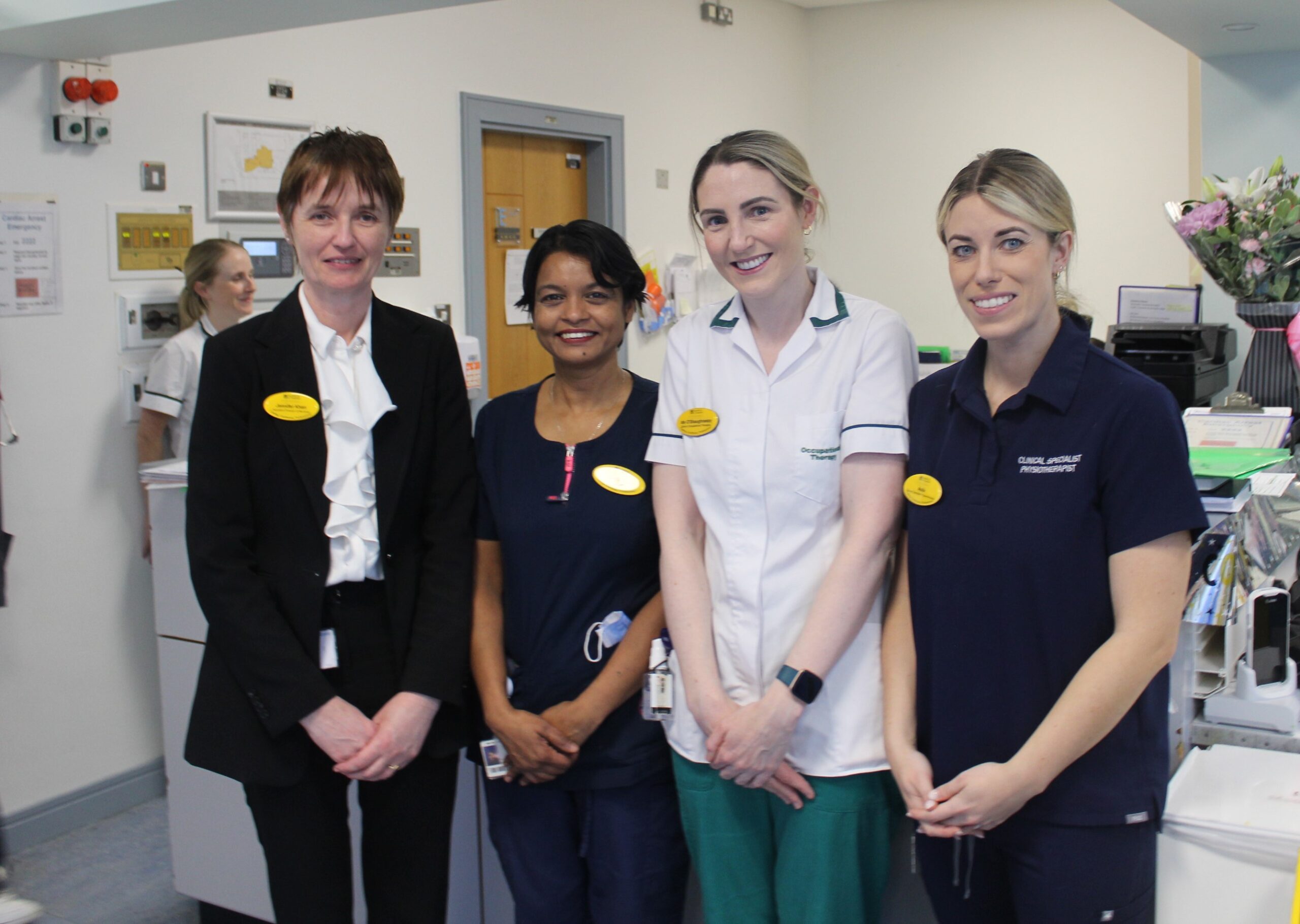

Health
UHL expands unit improving outcomes and reducing ED wait times for older adults
Pictured as the UHL Geriatric Emergency Medicine Unit expanded its service were Jennifer Khan, assistant director of nursing, Urgent and Emergency Care Directorate; Ingrid O’Brien, clinical nurse manager; Íde O’Shaughnessy, clinical specialist occupational therapist and Aoife Synnott, clinical specialist physiotherapist
UHL expands Geriatric Emergency Medicine Unit improving outcomes and reducing wait times for older adults attending emergency department

A specialist unit aimed at improving the experience and outcomes of older adults attending the Emergency Department expands UHL operations this winter.
The Geriatric Emergency Medicine (GEM) Unit, which opened in October 2022, has more than doubled the number of assessment spaces following recent renovations and has extended operating hours to run around the clock on weekdays.
Suitable patients aged 75 years and over who present to the Emergency Department and who may benefit from a multidisciplinary assessment are streamed at the point of triage to the GEM Unit.
Additional health and social care professionals (physiotherapy, occupational therapy, medical social work), as well as medical and nursing staff, have been recruited to support this initiative. Clinical governance is provided by consultants in emergency medicine. Following a comprehensive assessment and intervention, the multidisciplinary team explore alternative care options and pathways with the older adult, if appropriate to do so, for example, continuing their care at home, in a community setting, or in a model 2 hospital.
Ireland’s growing and rapidly ageing population has led to an increased demand across the health services, including at Emergency Departments. Of just under 80,000 patients who attended the ED at UHL in 2022, 15% were aged 75 and over. This age group is also more likely to be admitted to hospital with over 50% of all over 75s who attended ED in Limerick and around the country last year having been admitted.
The Geriatric Emergency Medicine Unit has successfully identified alternative care options and pathways. As a result of this, less than one in three older adults has required admission to UHL so far this year. Data from January to November 2023 shows that of the 1,788 patients seen, 1,042 patients were discharged to their home, 222 were transferred to a model 2 hospital, for example St John’s Hospital, and 524 were admitted to UHL.
Íde O’Shaughnessy, Clinical Specialist Occupational Therapist, explained the importance of developing coherent alternative care pathways for older patients.

“When any older person living with frailty comes in to the Emergency Department, they are at risk of adverse outcomes such as falls, deconditioning, malnutrition or dehydration,” said Ms O’Shaughnessy.
“What the GEM Unit offers is timely team-based assessment in a dedicated environment that is attuned to their needs. Patients in the GEM Unit have their essential needs met in a way that mitigates against the adverse outcomes we know are associated with being on a trolley for a long period of time. We are reducing the risk to patients by mobilising them earlier, ensuring optimal nutrition and hydration and other care needs earlier and by having our patients more involved in decision-making with regard to their healthcare outcomes.”
These improvements in the patient experience have been facilitated through recent renovation works which have more than doubled the capacity of the GEM Unit. Opened in October 2022 with five assessment spaces, the service now has space for nine patients (including a new isolation bay) and additional seating for ambulatory patients which brings the total capacity to 12. With the unit now operating 24 hours a day from Monday to Thursday, throughput on a single day can reach up to 20 patients.
Aoife Synnott, Clinical Specialist Physiotherapist, GEM Unit, said all the team were excited to expand the service to older patients.
“We do have exclusion criteria which means that the most acutely unwell patients who may require resuscitation or who have major isolation needs will remain in the Emergency Department. Typically we might see older adults with musculoskeletal pain; older adults with injuries following a fall; older adults presenting with an exacerbation of COPD (chronic obstructive pulmonary disease) or an acute infection in terms of UTI (urinary tract infection). But in essence anybody who is over 75 and outside of these exclusion criteria can come to the GEM Unit. The health and social care professionals here work closely with medical and nursing staff taking an interdisciplinary approach which has the patient at its centre. Because we are working in tandem with the doctors, we can see a higher acuity of patient. From the patient’s point of view, their overall time spent in the department has reduced significantly.” said Ms Synnott.
Ingrid O’Brien, Clinical Nurse Manager 2, GEM Unit, added: “From the point of view of nursing, the environment here facilitates more time for a thorough assessment of all our patients. Nursing assessment can take a bit longer – and we expect these things to take longer when we are looking after older adults. If a patient comes in at lunchtime, we will wait until after they have eaten to do their assessment. If it takes 20 minute to mobilise a patient to go to the bathroom, that is what we do. It’s not about the needs of the system. It’s about the needs of the patient and truly holistic from that point of view.”
Jennifer Khan, Assistant Director of Nursing, Urgent and Emergency Care Directorate, UL Hospitals Group, said: “As a multidisciplinary team, what we don’t want is to have our older patients waiting in ED for extended periods unnecessarily. What the GEM Unit has allowed us to do is to egress from the ED those older patients who meet the criteria. The recent renovation works will enable us to see more patients in the GEM Unit and build on the excellent work achieved here to date”.
Find out more here.
Read more University Hospital Limerick stories here.














